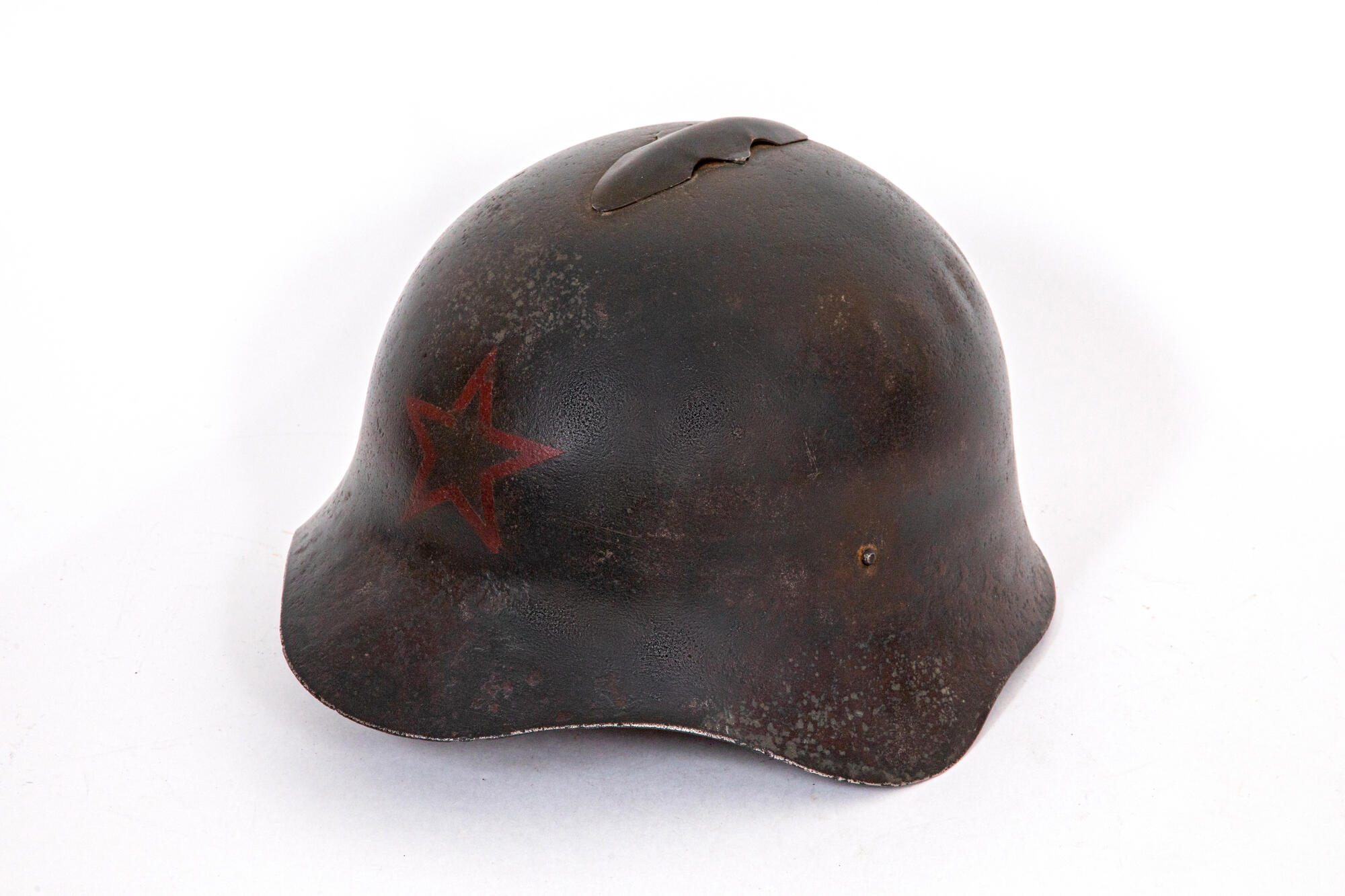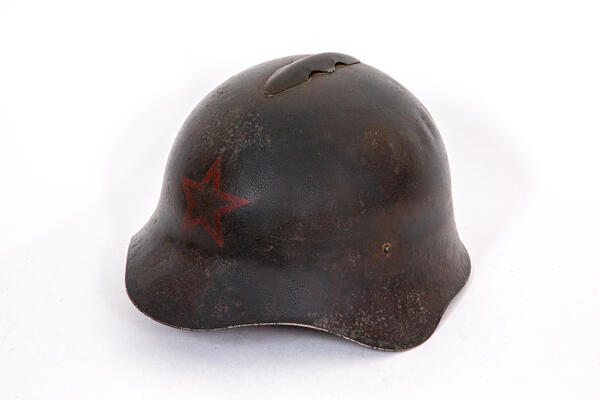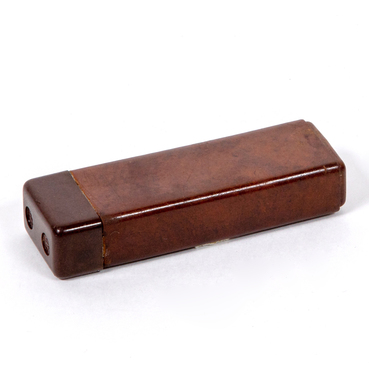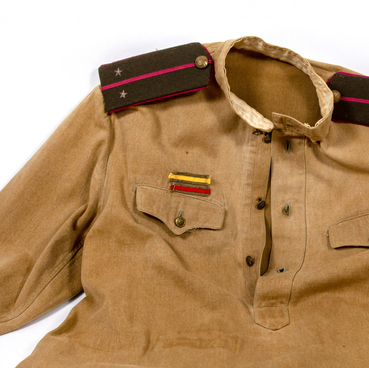Due to the political situation in Europe at the beginning of the 1930s, Soviet military leaders accelerated the development of weapons, uniforms, and accoutrements. In particular, it was necessary to develop a new steel helmet to replace the outdated French Adrian helmets and the pre-revolutionary Russian helmets M17 Sohlberg.
In the middle of the 1930s, the USSR started the development of a new steel helmet for the Red Army. The Artillery Directorate of the Workers’ and Peasants' Red Army participated in the production of the helmet. Specialists from the Metal Science Department of the Artillery Academy were responsible for steel selection. Alexander Schwartz, a Military Engineer 1st rank of the Artillery Directorate of The Workers and Peasants' Red Army and military intendant 1st rank, submitted a prototype of the new helmet. The helmet was approved in January 1936.
The production of a metal base started in the same year at the Lysva Metallurgical Plant in the Ural. The canvas liner (also called “podtuleinik”), due to which the helmet could be fixed on the head, was made at the “Liberated Labor” factory in Moscow and then it was delivered to Lysva. The new helmet was called “Steel helmet, 1936 model”, or “SSh-36”, as in 1936 it was adopted by the Red Army.
The SSh-36 originally was hemispherical with a front rim and wide flares over the ears. Some design elements of the previous models did not change. For example, a ventilation hole was located at the top part of the helmet and was covered with a special overlay that looked like a smaller crest of the Adrian helmet.
Such helmets weighed about 1200–1300 grams, and width of the steel layer was 1.1 mm. The canvas dome-shaped liner was suspended from the helmet by three metal tabs. The liner size was adjusted with the help of a drawstring placed in the top part of the shell. Corrugated aluminum stripes were located between the helmet and the liner. They provided ventilation and shock absorption while running and jumping. The chinstrap was made of fabric or leather. Its length was adjusted with the help of a square clip buckle.
The released batches of new helmets were additionally tested at the manufacturing plant. Some of them were selected as samples and shot with pistol and rifle bullets at a shooting range. Test results along with descriptions of the chemical composition and mechanical properties of the armored steel were written down in the passport of the helmet.
The SSh-36 was tested in battle conditions during the Spanish Civil War, the Battles of Lake Khasan in 1938, and in the Battles of Khalkhin Gol in 1939 during the Soviet-Finnish War. Semyon Budyonny (Soviet commander, one of the first marshals of the Soviet Union) suggested that the wide flaps of the helmet could protect against the shashkas (sabers). However, it turned out that they created a wind effect and hindered soldiers' freedom of movement. Gradually SSh-36 was replaced with a new model — SSh-40.
In the middle of the 1930s, the USSR started the development of a new steel helmet for the Red Army. The Artillery Directorate of the Workers’ and Peasants' Red Army participated in the production of the helmet. Specialists from the Metal Science Department of the Artillery Academy were responsible for steel selection. Alexander Schwartz, a Military Engineer 1st rank of the Artillery Directorate of The Workers and Peasants' Red Army and military intendant 1st rank, submitted a prototype of the new helmet. The helmet was approved in January 1936.
The production of a metal base started in the same year at the Lysva Metallurgical Plant in the Ural. The canvas liner (also called “podtuleinik”), due to which the helmet could be fixed on the head, was made at the “Liberated Labor” factory in Moscow and then it was delivered to Lysva. The new helmet was called “Steel helmet, 1936 model”, or “SSh-36”, as in 1936 it was adopted by the Red Army.
The SSh-36 originally was hemispherical with a front rim and wide flares over the ears. Some design elements of the previous models did not change. For example, a ventilation hole was located at the top part of the helmet and was covered with a special overlay that looked like a smaller crest of the Adrian helmet.
Such helmets weighed about 1200–1300 grams, and width of the steel layer was 1.1 mm. The canvas dome-shaped liner was suspended from the helmet by three metal tabs. The liner size was adjusted with the help of a drawstring placed in the top part of the shell. Corrugated aluminum stripes were located between the helmet and the liner. They provided ventilation and shock absorption while running and jumping. The chinstrap was made of fabric or leather. Its length was adjusted with the help of a square clip buckle.
The released batches of new helmets were additionally tested at the manufacturing plant. Some of them were selected as samples and shot with pistol and rifle bullets at a shooting range. Test results along with descriptions of the chemical composition and mechanical properties of the armored steel were written down in the passport of the helmet.
The SSh-36 was tested in battle conditions during the Spanish Civil War, the Battles of Lake Khasan in 1938, and in the Battles of Khalkhin Gol in 1939 during the Soviet-Finnish War. Semyon Budyonny (Soviet commander, one of the first marshals of the Soviet Union) suggested that the wide flaps of the helmet could protect against the shashkas (sabers). However, it turned out that they created a wind effect and hindered soldiers' freedom of movement. Gradually SSh-36 was replaced with a new model — SSh-40.



